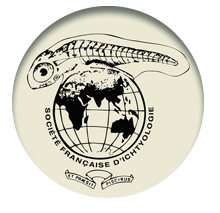Insights into the spatio-temporal productivity distribution in the Indian Sector of the Southern Ocean provided by satellite observations
How to cite: Dragon, A.-C., Marchand, S., Authier, M., Cotté, C., Blain, S., & Guinet, C. (2011). Insights into the spatio-temporal productivity distribution in the Indian Sector of the Southern Ocean provided by satellite observations. Cybium, 35(SP): 57-67. https://doi.org/10.26028/CYBIUM/2011-35SP-006
In the Indian sector of the Southern Ocean, satellite data were used to investigate the spatio-temporal dynamics of phytoplankton bloom in relation to physical oceanographic variations. Three geographical sectors were considered: the interfrontal zone, the Kerguelen Plateau and the Antarctic sector. The Kerguelen Plateau produces a very large phytoplankton bloom due to its relatively shallow depths and strong vertical mixing, that contrast with the surrounding high-nutrient low-chlorophyll (HNLC) waters of the interfrontal zone of the Southern Ocean. Understanding the spatio-temporal dynamics of phytoplankton biomass, as a proxy of primary production, is of fundamental importance since primary production sets a first-order constraint on the energy available to sustain the entire ecosystem. Analyses of high quality ocean color datasets revealed details of the inter-annual, seasonal and spatial dynamics of phytoplankton over the plateau, in the interfrontal zone and in the Antarctic sector. The parts of the plateau north and south of the polar front were found to exhibit different patterns. The plateau surface chlorophyll-a concentration and the productivity conditions available in the western and eastern interfrontal zones were also compared. This approach highlights the spatio-temporal variability of primary production in the Indian sector of the Southern Ocean and introduces a new prospect of investigation regarding the hydrography and biological richness of the Kerguelen Plateau.


